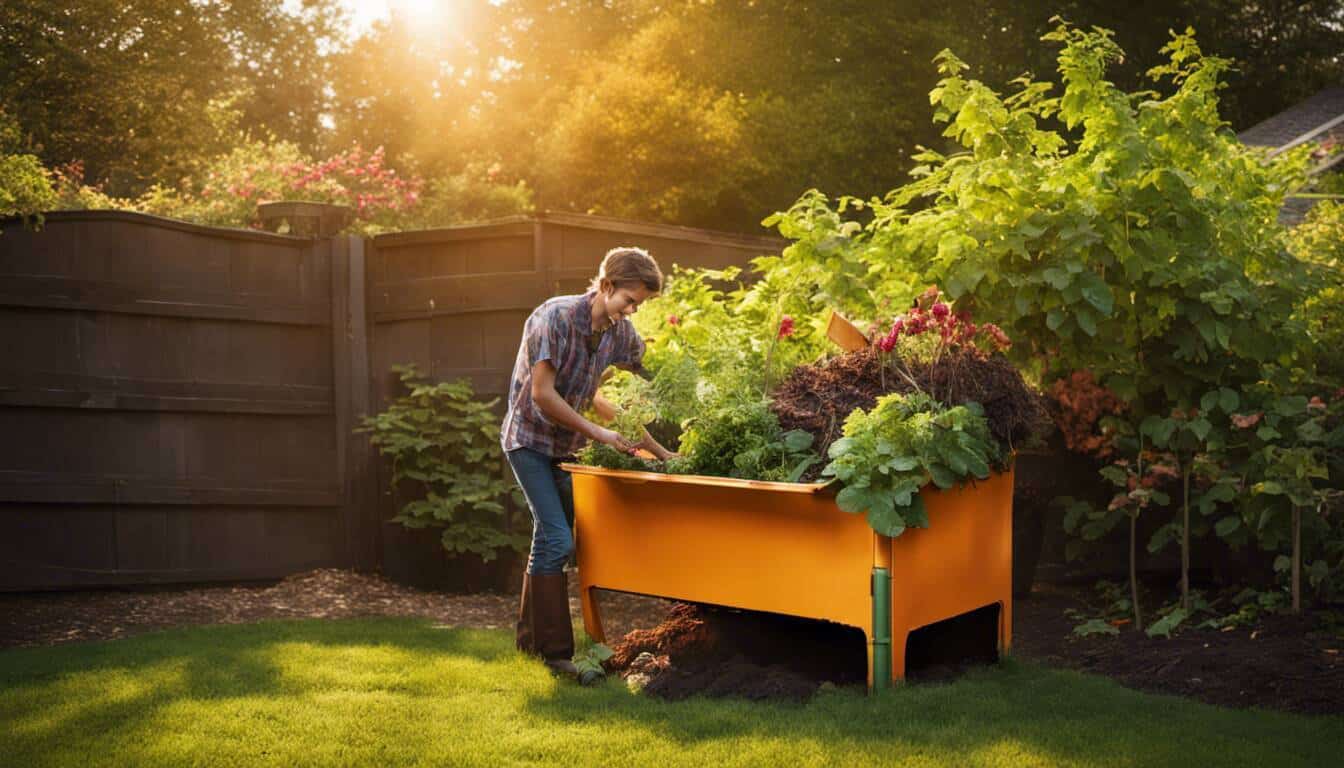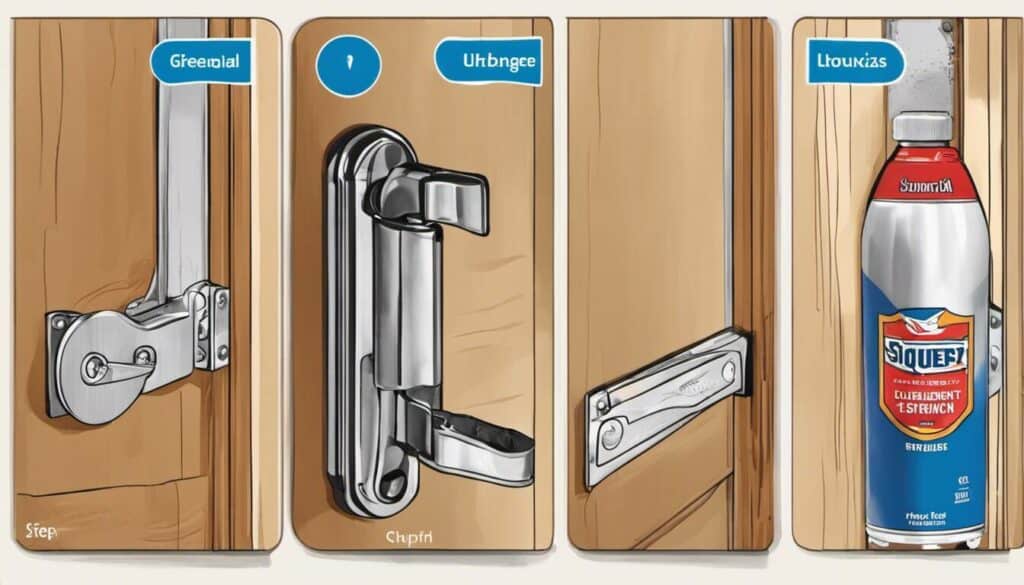Interested in reducing waste, improving plant health, and making a positive environmental impact? That’s what appealed to me – the chance to beautify my backyard while being eco-conscious. I’ll walk you through how I got started and provide a simple guide for beginners. Keep in mind, it might feel a bit challenging at first, but with time, you’ll get the hang of it… in short, give it a chance to beautify my backyard while being eco-conscious. I’ll walk you through how I got started and provide a simple guide for beginners. Keep in mind, it might feel a bit challenging at first, but with time, you’ll get the hang of it… in short, give it a chance!
Before starting your first compost pile, it’s important to understand what materials can be used in composting and how to balance them. Proper care of your compost pile includes ensuring that it stays moist but not too wet, that there is good aeration, and that materials are turned frequently. Following these basic guidelines will help ensure you have a healthy and productive compost pile.
“As someone who has dedicated a huge part of his professional life to green solutions, I’d advocate for vermicomposting as the most user-friendly and space-efficient composting method for a small backyard. It is an exceptional way to manage household waste, and it creates powerful nutrient-rich organic matter that can drastically improve the health of your garden.”
Dr. Hamilton Bracknell, PhD in Horticulture
Steps to Kick-Start Your Composting Journey
Embarking on your first composting adventure can be an exciting and rewarding experience. To kick-start your composting journey, there are a few essential steps you’ll want to follow. Firstly, designate an area in your backyard for your compost pile or acquire a suitable compost bin. This space should have good drainage and be easily accessible for adding materials and turning the pile. Once you have your designated area, it’s time to gather the necessary ingredients for successful composting.
Start by collecting kitchen scraps from fruits, vegetables, and coffee grounds – essentially any organic waste that is green and fresh. Avoid adding meat, dairy products, cooked food, animal waste, or spicy items as they can attract pests and slow down the decomposition process. For instance, think of collecting leftover chopped vegetables, onion peels, corn husks, eggshells, coffee grounds, and used tea leaves.
To maintain a proper carbon-to-nitrogen ratio in your compost pile, gather dry brown materials such as dead leaves, shredded cardboard, or small twigs. This balance between brown (carbon-rich) and green (nitrogen-rich) waste is crucial for effective decomposition. While it’s not necessary to have a perfect ratio when starting out, a general guideline is to aim for two or three parts brown materials to one part green materials. This balance is not only important for composting but also for maintaining a healthy lawn such as dead leaves, shredded cardboard, or small twigs. This balance between brown (carbon-rich) and green (nitrogen-rich) waste is crucial for effective decomposition. While it’s not necessary to have a perfect ratio when starting out, a general guideline is to aim for two or three parts brown materials to one part green materials.
Now that we have an overview of how to get started with composting, let’s discuss the next step: sourcing for a suitable compost bin.
- The Environmental Protection Agency (EPA) estimates that 28% of household waste could be composted, significantly reducing the amount of waste sent to landfills.
- A study published in “Journal of Cleaner Production” in 2020 reported that home composting can reduce household waste generation by approximately 40%.
- According to the U.S. Composting Council, a well-managed home compost pile with a good balance of green and brown materials can reach temperatures above 150 degrees Fahrenheit, promoting efficient decomposition and killing weed seeds and disease-causing organisms.
Sourcing for Suitable Compost Bin
When it comes to choosing a compost bin for your backyard composting setup, there are various options available depending on your preferences and requirements. You can opt for open-style composting using wooden planks and chicken mesh or consider purchasing a ready-made plastic composting container.
Open-style composting allows for easy airflow, allowing beneficial organisms like earthworms to access the pile. However, it might be less aesthetically pleasing and can attract unwanted pests if not managed properly.
On the other hand, composting containers with aeration features and stirring mechanisms, such as composting barrels or tumblers, provide better control over the composting process. These containers are usually more expensive but offer convenience in terms of turning and aerating the compost.
It’s important to note that regardless of the type of compost bin you choose, certain considerations remain consistent. Make sure the bottom of the container is in contact with the ground to allow earthworms to enter. Proper aeration and occasional stirring are crucial for decomposition, so ensure your chosen bin facilitates these processes. Additionally, maintaining dampness in the compost and achieving a balance between brown and green waste are key factors for successful composting.
Now that you understand how to kick-start your composting journey and have insights into sourcing a suitable compost bin, let’s move on to the next steps: preparing your compost pile and maintaining optimal conditions for decomposition.
- Choosing the right compost bin for your backyard setup can depend on your preferences and requirements, with options including open-style composting or ready-made plastic containers. Composting containers with aeration features and stirring mechanisms provide better control over the process but can be more expensive. However, regardless of the bin type chosen, factors like proper aeration, occasionally stirring, and balance between brown and green waste are crucial for successful composting. In summary, it’s important to choose a suitable compost bin and maintain optimal conditions for the decomposition process.
Preparing Your Compost Pile
Composting is an incredibly rewarding and sustainable way to reduce waste and create nutrient-rich soil for your garden. The first step in this exciting journey is preparing your compost pile.
Start by selecting a suitable location in your backyard that receives ample sunlight and provides easy access for regular maintenance. It’s advisable to have the bottom of the container in contact with the ground, allowing earthworms to access the pile and aid in decomposition. Additionally, ensure that the area is away from entrances to prevent any unwanted odors or pests.
Next, choose a composting method that aligns with your preferences and available resources. Options range from open-style composting with wooden planks and chicken mesh to using a plastic composting container. Composting containers that provide aeration and stirring, such as composting barrels, may be more expensive but offer added benefits.
Imagine setting up your backyard compost pile using wooden planks and chicken mesh. You carefully construct a three-sided bin, leaving one side open for easy access. This method allows for ample airflow and facilitates stirring without needing to invest in expensive equipment.
To optimize the composting process, it’s essential to maintain proper aeration and frequent stirring. Use a rake or spade to turn the compost every 4-5 days, ensuring all materials are well-mixed. This helps distribute oxygen throughout the pile, speeding up decomposition.
Keeping your compost pile damp is also crucial for successful decomposition. While you don’t want it too wet (avoid puddles or droplets when squeezed), it should retain enough moisture to support microbial activity. Adding dry leaves, grass clippings, or small twigs can aid in maintaining the right level of dampness.
Now that we’ve covered the essentials of preparing your compost pile, let’s move on to explore what types of kitchen and garden waste can be effectively composted.
Composting Essentials: Kitchen and Garden Waste
Composting is an excellent opportunity to utilize organic waste from your kitchen and garden. To achieve a balanced and nutrient-rich compost, it’s important to understand what types of materials can be composted effectively. This knowledge can also be applied to choosing plants for your living room that can contribute to your compost pile.
Suitable kitchen waste for composting includes green and organic raw waste. This can include leftover chopped vegetables, onion peels, corn husks, eggshells, coffee grounds, and used tea leaves. These items contribute nitrogen to the compost pile.
It’s crucial to avoid adding meat, dairy products, cooked food, animal waste, and spices to your compost, as they may attract pests or produce unpleasant odors.
Picture yourself collecting your kitchen scraps in a small container or plastic bag on the kitchen counter. Every 2-3 days, you transfer these scraps to your compost pile outside. You diligently inspect each item before adding it, making sure it’s compostable and won’t disrupt the balance in your pile.
In addition to kitchen waste, garden waste is also valuable for composting. Materials like grass clippings, leaves (brown waste), and small twigs contribute carbon to the compost pile. A good balance between brown waste (dry leaves) and green waste (kitchen scraps) is essential for optimal decomposition.
Now that we’ve covered the basics of preparing your compost pile and understanding what kitchen and garden waste to include, we’ll dive deeper into identifying other types of compostable materials.
Identifying Compostable Materials
When it comes to composting, one of the first steps is to identify the materials that can be composted. By understanding what can and cannot be added to your compost pile, you can ensure a successful and efficient process. So, what are some examples of compostable materials?
Suitable kitchen waste for composting includes green and organic raw waste, such as leftover chopped vegetables, onion peels, corn husks, eggshells, coffee grounds, and used tea leaves. These kitchen scraps provide valuable nutrients for your compost. However, it’s important to note that certain items like meat, dairy products, cooked food, animal waste, and spices should not be added as they can attract pests or hinder the decomposition process.
Imagine you have a surplus of vegetable peels and coffee grounds from your daily routine. Instead of throwing them away, these kitchen scraps can be transformed into nutrient-rich compost for your garden by adding them to your compost pile.
It’s also worth mentioning that collecting kitchen scraps in a small container or plastic bag on the kitchen counter before transferring them to the compost container every 2-3 days helps maintain cleanliness and prevents odors. Before adding any waste item to your compost pile, evaluate whether it is compostable or not.
Harnessing Natural Helpers for Composting
Composting is not just about collecting and piling up organic waste; it also involves harnessing the power of natural helpers to aid in the decomposition process. Let’s explore some of these natural helpers that play a vital role in effective composting.
First and foremost are earthworms. Earthworms are incredibly beneficial in breaking down organic matter and improving the overall quality of the compost. They help aerate the pile by creating tunnels as they move through it. Additionally, their castings (excrement) add valuable nutrients to the finished compost.
Imagine stumbling upon a few earthworms while turning your compost pile. These wriggling creatures are nature’s laborers, silently working to transform your kitchen scraps into nutrient-rich compost. Their presence not only benefits your compost but can also help repel mosquitoes naturally in your garden pile. These wriggling creatures are nature’s laborers, silently working to transform your kitchen scraps into nutrient-rich compost.
Another natural helper is insects, such as beetles and ants, which contribute to the decomposition process by breaking down materials and assisting in their transformation into usable compost. While bugs and insects are expected in the compost pile, it should not emit a foul odor.
By understanding the importance of earthworms and insects in the composting process, you can create an environment that fosters their beneficial contributions, leading to high-quality compost.
Role of Earthworms in Composting
When it comes to composting, earthworms play a vital role in the breakdown of organic materials. These remarkable creatures are known as nature’s decomposers. As they burrow through the compost pile, they aerate the soil, allowing oxygen to reach the microorganisms responsible for decomposition. Not only do earthworms promote better drainage and moisture control within the compost, but their castings also contain rich nutrients that enhance the overall quality of the resulting compost. Their presence is a sign of a healthy compost pile and indicates that decomposition is happening effectively.
Imagine you’re looking at your compost pile one day and notice a few earthworms wriggling around in it. This is an encouraging sight! It means that your compost is providing a suitable environment for these beneficial creatures to thrive. The earthworms will continue to break down the organic matter, adding valuable nutrients and promoting a well-rounded composting process.
Seeing earthworms in your compost pile is like having enthusiastic little assistants working diligently to create nutrient-rich soil.
Now that we understand the importance of earthworms in composting, let’s explore how we can ensure a thriving compost pile overall.
Ensuring a Thriving Compost Pile
Creating and maintaining a thriving compost pile requires attention to several key factors. Let’s take a closer look at each of these aspects:
- Proper Aeration and Stirring: Regularly turning or stirring the compost helps introduce oxygen, which is crucial for aerobic decomposition. Aim to stir the pile every 4-5 days with a rake or spade to maintain proper airflow and prevent anaerobic conditions.
- Maintaining Dampness: While adequate moisture is essential for decomposition, excessive wetness can lead to unpleasant odors and slow down the process. Aim for a compost pile that is damp, similar to a wrung-out sponge. If the pile becomes too dry, sprinkle it with water to maintain the right level of moisture.
- Balancing Brown and Green Waste: To achieve optimal decomposition, ensure a balance between brown waste (dry leaves, shredded cardboard) and green waste (grass clippings, kitchen scraps). A general ratio of 2.5 or 3 parts brown to 1 part green is recommended. This balance is crucial not only for composting but also for natural weed control in your garden.
- Covering the Pile: It’s essential to cover your compost pile with a tight lid or tarp to prevent pests like rodents from accessing it while still allowing air circulation. Placing the compost area away from entrances can further deter unwanted visitors.
By paying attention to these factors and understanding the role earthworms play in composting, you are well on your way to creating nutrient-rich compost for your garden.






Taking matters into my own hands was an exciting venture after years teaching the theory to my students. I quickly realized that maintaining the right compost ratio was more complex than I initially thought, especially dealing with an unforeseen army of fruit flies!
Oh, those pesky fruit flies can get the better of anyone, Barnabas! Try adding a layer of brown material (like shredded cardboard) whenever you toss in food waste. It discourages the flies by reducing the smell and they won’t bother laying their eggs.
@Monty, that’s sage advice! I’d also recommend using sawdust; it’s another astonishing brown material I found works wonders in discouraging fruit flies while also improving the carbon-to-nitrogen ratio.
From my experience, adding crushed eggshells is also a great way to add calcium to your compost pile which can be vital for growing vegetables like tomatoes.
Oh, I couldn’t agree more, Tabitha Evelyn. But it’s best to remember nothing too good comes without a degree of patience – adding eggshells can take longer to decompose compared to other kitchen scraps. I usually crush them up pretty fine before adding to expedite the process.